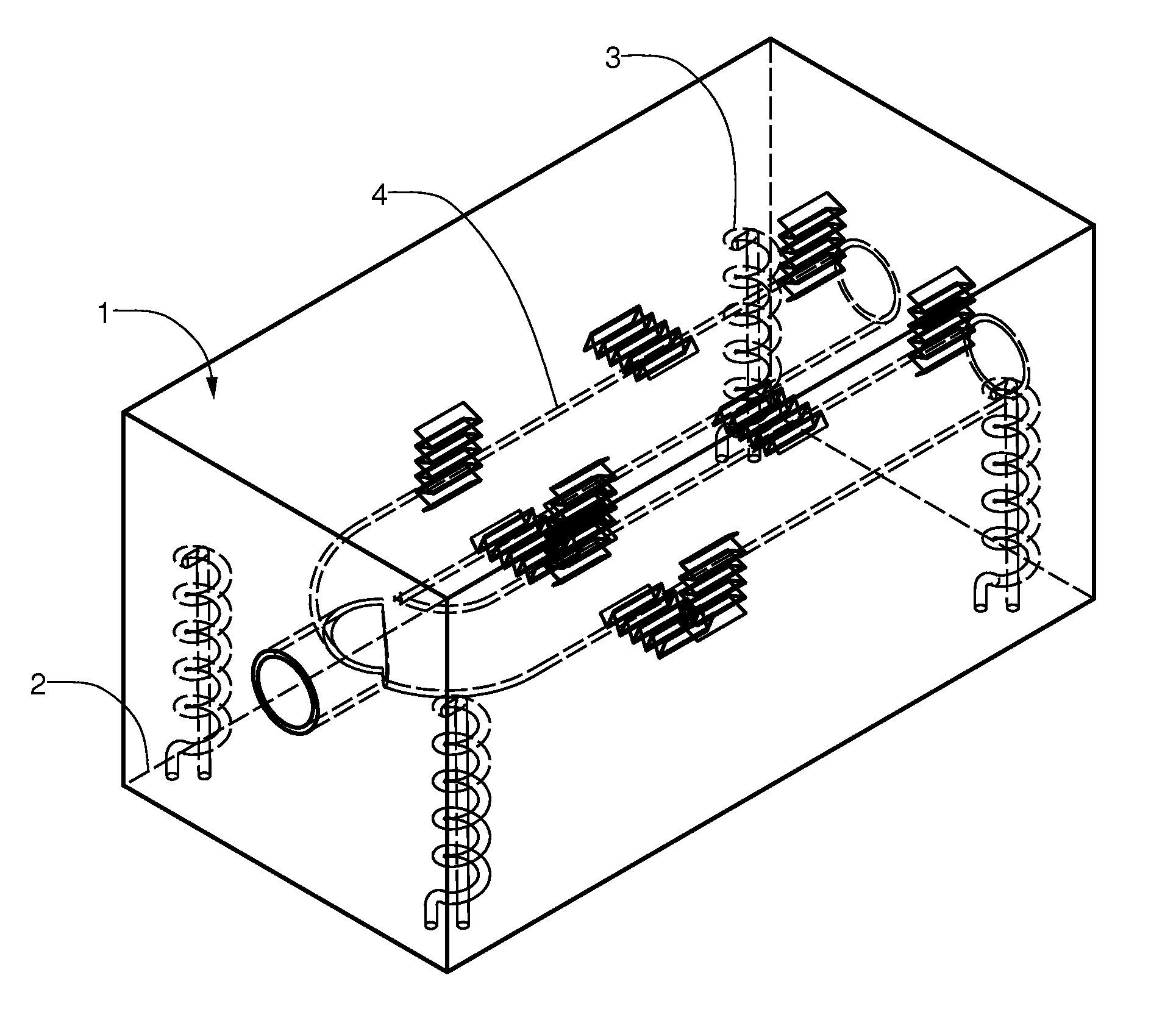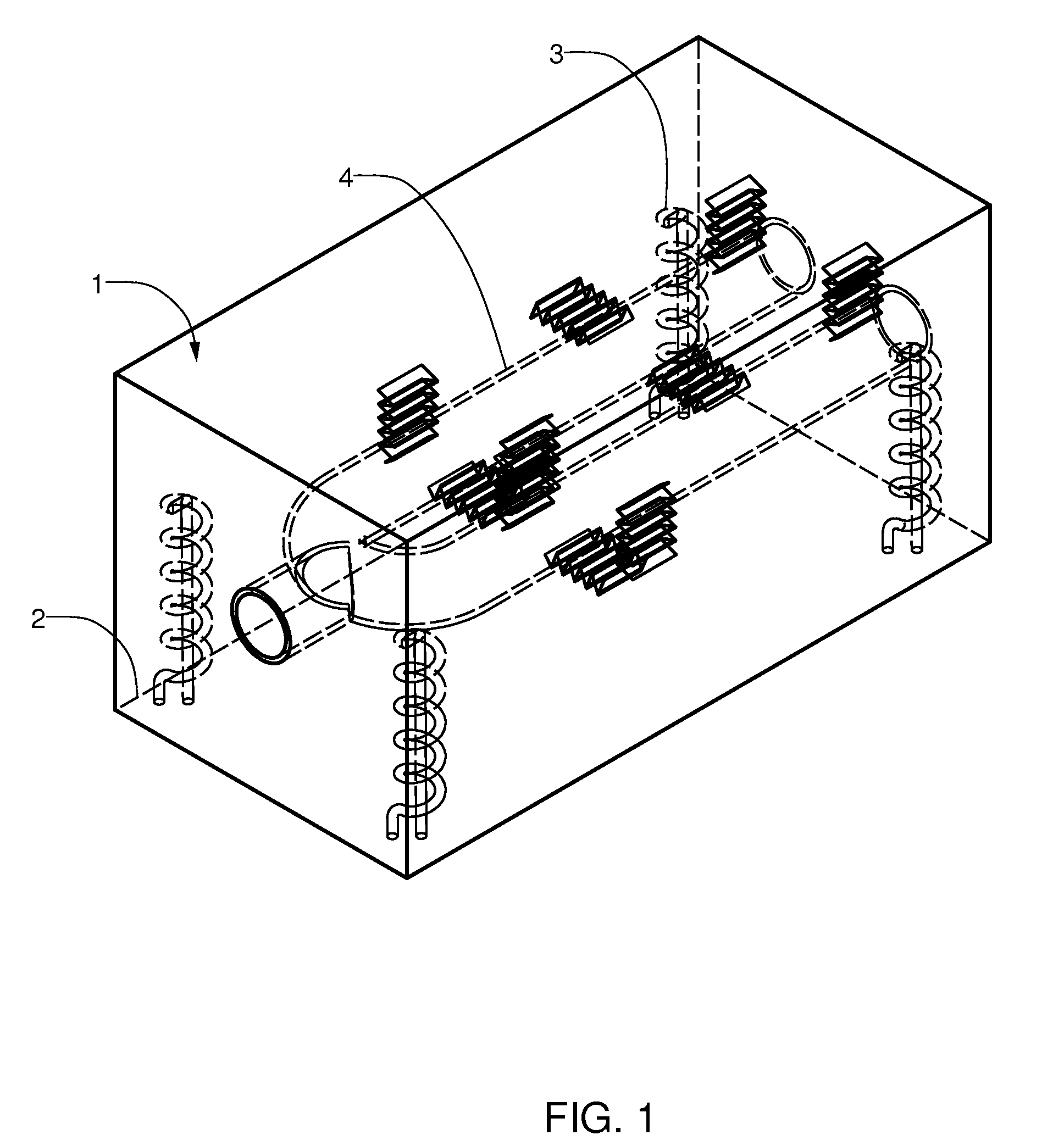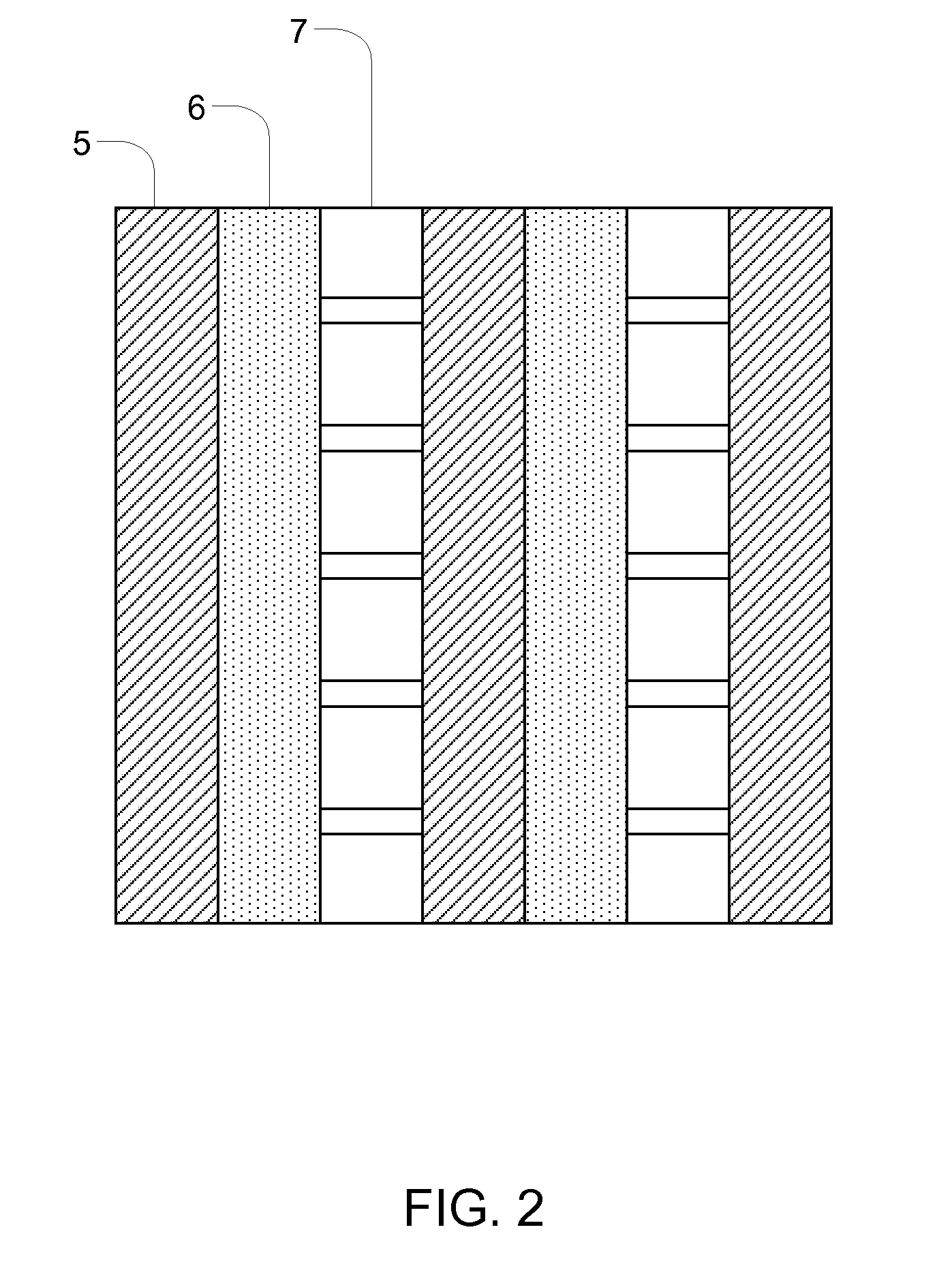Heat Reservoir for a Steam Engine
a technology for steam engines and heat reservoirs, which is applied in the field of heat reservoirs for steam engines, can solve the problems of inconvenient refueling, low heat exchange rate, and high cost of fuel, and achieve the effect of maximizing the efficiency of the heat exchanger tube and maximizing the heat exchange ra
- Summary
- Abstract
- Description
- Claims
- Application Information
AI Technical Summary
Benefits of technology
Problems solved by technology
Method used
Image
Examples
Embodiment Construction
[0014]The preferred embodiment is a reservoir as shown in FIG. 1. The reservoir contains a heat storage material 1 comprised of mostly aluminum. The reservoir is generally cubical and the aluminum is enclosed within an insulating jacket 2. The heat storage material is heated using electrical resistance coils 3 and the heat stored within the reservoir is retrieved using a heat exchanger 4 through which a working fluid, such as water, can flow.
[0015]The maximum amount of heat energy that can be stored by the reservoir is a function of the amount of aluminum contained within the reservoir and the temperature to which it is heated. Between the temperatures of 150° C. and 657° C., aluminum has an average heat capacity of 1.1 J / g-° C. At 657° C., aluminum melts and exhibits a relatively high heat of fusion, 400 J / g. Thereafter, in the liquid phase, aluminum exhibits a constant heat capacity of 1.2 J / g-° C. Therefore, between the preferred operating temperatures of 150° C. to 800° C., 500 ...
PUM
 Login to View More
Login to View More Abstract
Description
Claims
Application Information
 Login to View More
Login to View More - R&D
- Intellectual Property
- Life Sciences
- Materials
- Tech Scout
- Unparalleled Data Quality
- Higher Quality Content
- 60% Fewer Hallucinations
Browse by: Latest US Patents, China's latest patents, Technical Efficacy Thesaurus, Application Domain, Technology Topic, Popular Technical Reports.
© 2025 PatSnap. All rights reserved.Legal|Privacy policy|Modern Slavery Act Transparency Statement|Sitemap|About US| Contact US: help@patsnap.com



